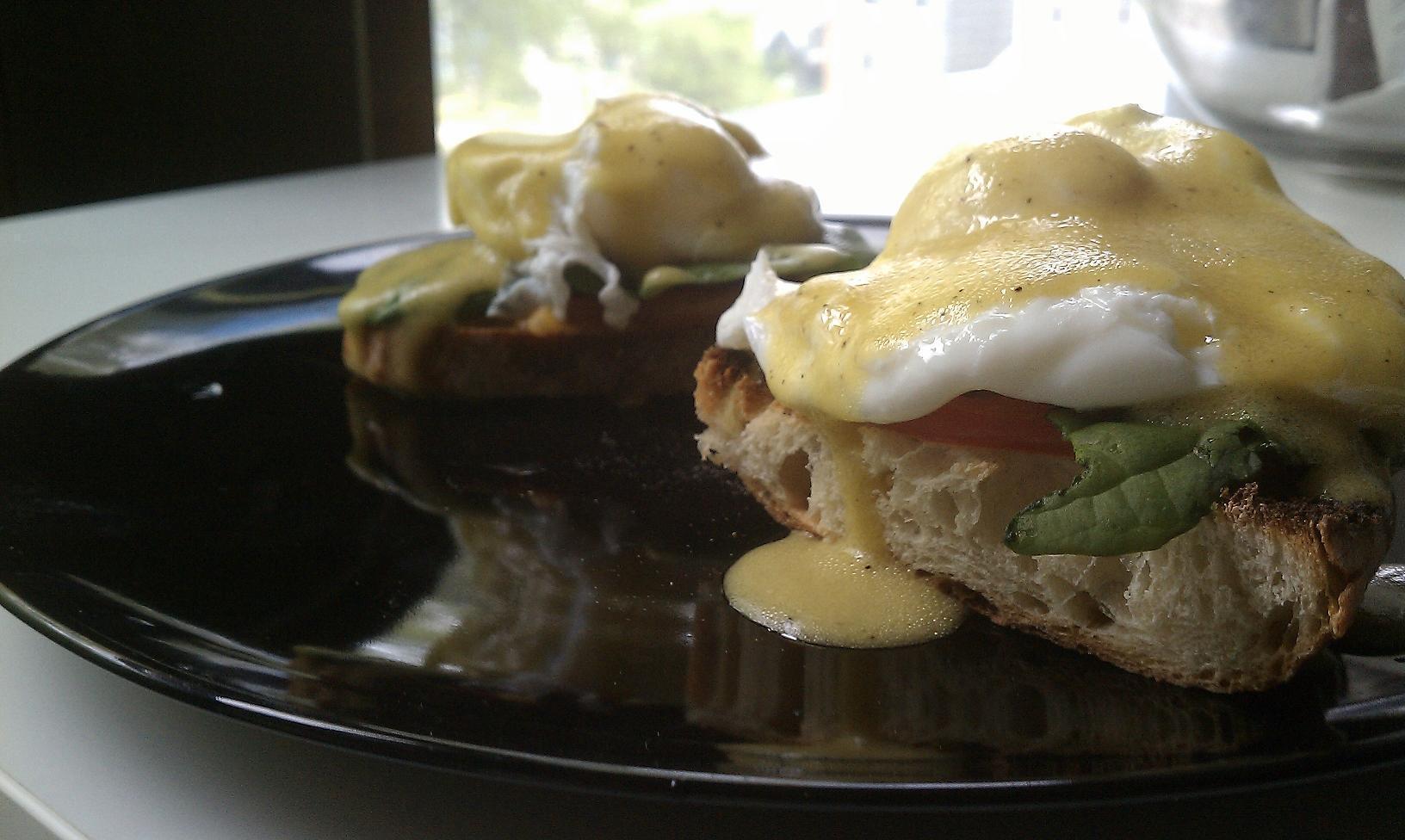The poached egg is a delicious and elegant treat, as pleasing to the eye as it is to the tongue. Yet it is also the Boo Radley of the egg family: seldom seen, frequently misunderstood, wrongly feared. I’m less concerned with the mistakes that people make poaching eggs than I am with the mistake of not poaching eggs at all. If you’re already poaching at home, you’re doing something right.
I’m not sure why so many people find poached eggs intimidating, but it’s a shame, because if you can boil water and crack an egg, you’re 90 percent there. Perhaps it’s the name. Everyone knows what boiling, frying, and scrambling mean, but poaching sounds forbiddingly exotic. (It comes from the old French poche, meaning “pouch,” which refers to the way the white envelops the yolk.) Perhaps people are scared off by the idea that you have to create a little whirlpool in your saucepan before adding your egg. (That technique works, but it means you can only cook one egg at a time, and it’s totally unnecessary.)
Or maybe it’s the vicious circle in which egg-poaching anxiety creates a market for superfluous poaching devices, the existence of which perpetuates the idea that poaching eggs is hard. Unless you’re insufferably uptight about having eerily round, symmetrical eggs, those contraptions are a waste of kitchen space.
Probably most egg-poaching failures are caused by boiling, rather than simmering, the water. A strong boil will obliterate a fragile, shell-less incoming egg. Instead, the egg, once deployed, should hang lazily in the water, undisturbed. It should not be buffeted by bubbles. Take care also not to fill the pan too full of water—about an inch and a half should do. If the water is too deep, the dense yolk will plunge toward the bottom of the pan, trailing the white behind it like a comet.
Many recipes rightly call for putting the finished eggs in cold water to stop the cooking and wash off the vinegar. (Do add vinegar to your saucepan; it helps the white coagulate.) There’s an even greater benefit to this step: After the eggs have cooled off for 30 seconds or so, you can fish them out of the water with one hand and, with the other, pick away any stray or stringy strands of white. This will take your eggs into the upper echelon of aesthetic refinement.
Once you’ve got the technique down, you’ll start noticing all kinds of situations that cry out for the addition of poached eggs. They’re great atop a crunchy salad, served with sautéed leafy greens, or poached in soup broth or tomato sauce (as in shakshouka). The most prominent vehicle for poached eggs in the U.S. is surely eggs Benedict, whose savory decadence is unparalleled on brunch menus. I must say I find ultra-rich Hollandaise sauce to be over the top; like Brian Wilson’s production on Pet Sounds, it overpowers an otherwise delicate pleasure. Anyway, who wants to go to the trouble of emulsifying egg yolks and butter before breakfast?
But I can’t argue with eggs Benedict’s toasted English muffin foundation: The mix of gooey yolk and crunchy bread is irresistible. Here I suggest swapping out the Hollandaise in favor of goat cheese and a mustard vinaigrette, for a lighter but assertive combination that showcases the egg, rather than drowning it in richness.
Eggs Edelman
Yield: 2 main-course servings or 4 appetizer servings
Time: 15 minutes
2 ounces goat cheese
2 English muffins, split, or four ½-inch slices of ciabatta
Four ¼-inch slices of fresh tomato
2 tablespoons plus ½ teaspoon balsamic vinegar
Salt
¼ cup plus 2 tablespoons extra-virgin olive oil
½ teaspoon Dijon mustard
¼ teaspoon maple syrup
Black pepper
4 large eggs, cold from the refrigerator
½ cup arugula
Sriracha sauce for serving (optional)
1. Heat the oven to 400°F. Spread the goat cheese on the English muffins or bread slices, and top each with a tomato slice. Bake until lightly browned, 5 to7 minutes.
2. Meanwhile, put 1½ inches of water in a large saucepan with ½ teaspoon of the vinegar and a large pinch of salt. Bring to a boil over high heat. While the water is heating, combine the oil, the remaining vinegar, the mustard, and the maple syrup in a small bowl or measuring cup. Season with salt and pepper and whisk to combine. Fill a separate medium bowl with cold tap water.
3. When the water comes to a boil, reduce the heat to medium-low so it simmers gently. Crack the first egg into the water from as close to the surface as possible. (If you’re afraid of burning yourself or breaking the yolk, you can break the egg into a small bowl and then slide it from the bowl into the water.) The white will drift away from the yolk; pull it back by dragging a slotted spoon across the surface of the water. Repeat with the remaining eggs.
4. Cook the eggs for about 4 minutes, then transfer them to the bowl of cold water with a slotted spoon. (If they stick to the bottom of the pan, dislodge them with a spatula.) Let the eggs cool in the water for 30 seconds, then pull them out with your hand or a slotted spoon and remove any unappetizing strands of white.
5. Divide the arugula among the toasts, then top each with one of the poached eggs. Drizzle the eggs with vinaigrette and Sriracha sauce, if you like, and serve immediately.
Previously in You’re Doing It Wrong:
Bread
Blueberry Muffins
Polenta
Hard-Boiled Eggs
Oatmeal
Cinnamon Rolls
Frittata
